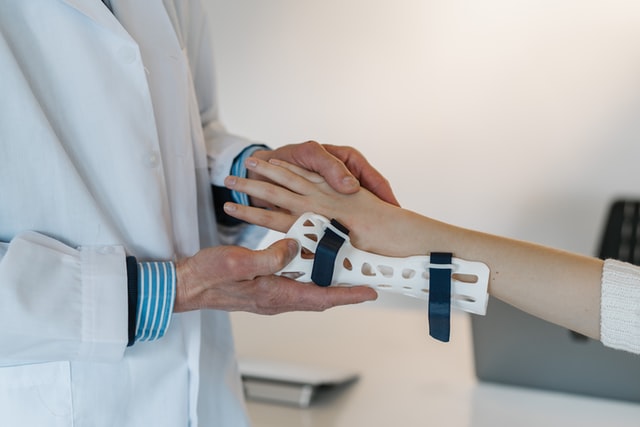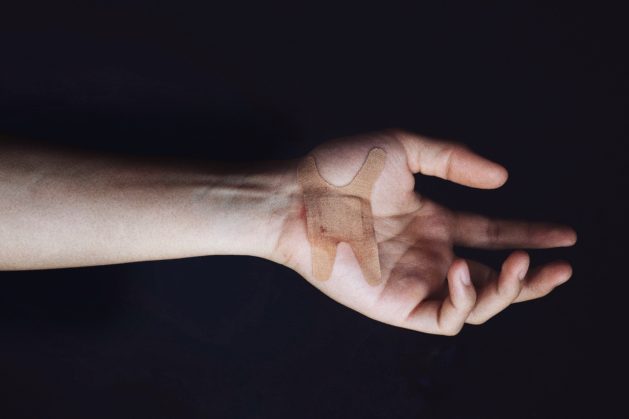9 Essentials For Your Workplace First Aid Kit

Accidents can happen anytime at the workplace without anticipation. It could be one of your staff tripping on a cable, someone feeling unwell suddenly, or using tools or machines that can injure operators and passersby. All these scenarios can lead to an injury or worsen conditions requiring urgent medical attention. It’s where a first aid kit comes in handy. A first aid kit is a small box with all the vital emergency equipment and supplies, which can help minimize the severity of an accident.
For example, you may have tools and supplies to stop a bleed, hold a broken bone or limb, or prevent an injury from worsening, potentially resulting in fatalities. With that in mind, here’s a list of nine essentials for your workplace first aid kit:
Splints Device
A splint device helps support ruptured tendons, broken bones, and damaged tissues after an accident. They assist the broken bones by holding the broken ends together and ensuring they stay intact and properly aligned. When you buy them from reliable companies, they can also provide great training videos on using them. Through such helpful information, you can learn how to use the various sizes of splints appropriately depending on your injury. Applying them the right way can help avoid wasting their use. Thus, ensure everyone in the company receives training on how to use these splints.
Bandages
They’re one of the essential items in a first aid kit, and there should at least be enough of them in your workplace kit. Bandages can assist you in supporting joints, holding dressings, and applying pressure to wounds to prevent swelling and bleeding. Some standard types include:
- Roller: Ensure you have a 2-inch-wide pack of roller bandages. They’re multifunctional and come in handy during most typical injuries.
- Triangular: Include at least two of these kinds of bandages in your kit. You can use them as dressings for more extensive wounds and burns. They’re made of cloth fabric and can be tucked to make slings. They help prevent an injury from becoming too painful.
Gauze Pads
If an injury is still bleeding, you can use gauze pads to apply pressure to the wound until the bleeding lessens. Gauze pads are also helpful for minor burns, cuts, or scrapes. Holding them with adhesive tape enables you to use them as bandages. It’s best to select the 4 x 4 inches ones or bigger ones to improve their functionality.
Scissors And Pins
You can’t use the whole big roll on one person when applying the bandage because others may need it too. That’s why you need a pair of scissors in your workplace first aid kit. Another application is removing dressings around wounds to reduce the risk of infection. On the other hand, the primary function of the pins in an emergency is to hold the bandage in position to the required degree of tightness.
Wipes Or Sprays
There’s no guarantee that you’ll have running water at your workplace during an accident. Therefore, including wet wipes in your kit is essential. You can use them to clean the injuries one has sustained. It’d be best to stock the ones with disinfectant properties for better wound management. Saline sprays can also help if you want to wash the victim’s eyes and prevent irritation. It also helps eliminate germs that may affect burns or cuts.
Resuscitation Equipment
This type of equipment comes in handy when someone stops breathing. It typically comprises:
- Pocket masks: When giving someone first aid, a protective cover can help prevent infections when administering rescue breaths.
- Resuscitation bag: It supplies air to the victim’s airway to help restore normal breathing.
- Pain Relievers
Pain is typical in emergencies, and it can sometimes be excruciating. Giving the victim painkillers can help relieve their pain in such a case. So, ensure your emergency kit has over-the-counter pain meds such as ibuprofen and aspirin.
Gloves
If you’re conducting first aid and have a small cut on your body, you risk getting infections if the bodily fluids like blood or saliva from the person you’re helping mix with yours. An example is the Human Immunodeficiency Virus (HIV). Thus, having a few disposable gloves in your kit is critical.
Aluminum Blankets
Severe injuries or trauma may cause victims to feel hypothermic, resulting in heart failure. Thus, having these aluminum blankets helps keep the body warm as they await medical treatment.
Conclusion
Workplace accidents may not be entirely preventable, no matter the mitigation measures you enforce. Thus, purchasing and maintaining a well-stocked first aid kit is paramount. It helps with preserving lives. Also, consider training your staff on how to use the items in the kit. This way, they’ll be adequately prepared when an accident occurs.


